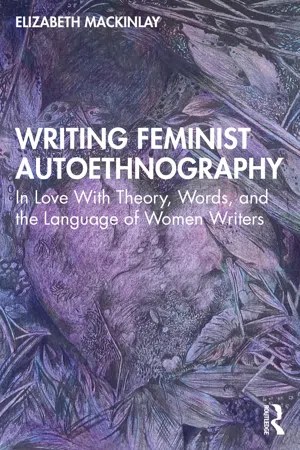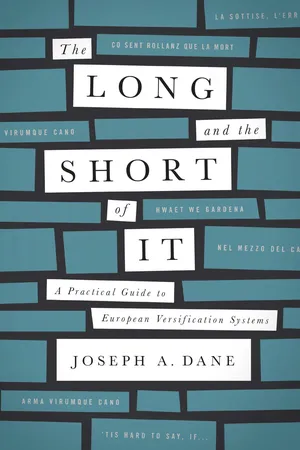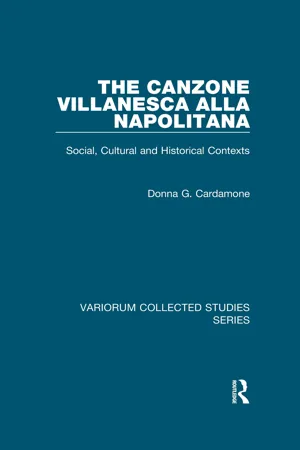Literature
Villanelle
A villanelle is a 19-line poetic form with a specific structure and rhyme scheme. It consists of five tercets followed by a quatrain, with the first and third lines of the opening tercet recurring alternately at the end of the other tercets and then together at the close of the final quatrain. This repetition creates a haunting and musical effect in the poem.
Written by Perlego with AI-assistance
4 Key excerpts on "Villanelle"
- eBook - ePub
- Jeffrey Wainwright(Author)
- 2015(Publication Date)
- Routledge(Publisher)
Chapter 6 . Certainly these first lines from three of the twentieth century’s most notable Villanelles suggest as much:Time will say nothing but I told you so (Auden, ‘If I could tell you’)It is the pain, it is the pain, endures. (William Empson, ‘Villanelle’)Here, to demonstrate the whole form, is Thomas’s complete Villanelle with its remarkably tight structure. I have marked the recurring lines.I wake to sleep, and take my waking slow. (Theodore Roethke, ‘The Waking’)Do not go gentle into that good night , Old age should burn and rave at close of day;Rage, rage against the dying of the light .Though wise men at their end know dark is right, Because their words had forked no lightning theyDo not go gentle into that good night .Good men, the last wave by, crying how bright Their frail deeds might have danced in a green bay,Rage, rage against the dying of the light .Wild men who caught and sang the sun in flight, And learn, too late, they grieved it on its way,Do not go gentle into that good night .Grave men, near death, who see the blinding sight Blind eyes could blaze like meteors and be gay,Rage, rage against the dying of the light .And you, my father, there on the sad height, Curse, bless, me now with your fierce tears, I pray.Do not go gentle into that good night .Rage, rage against the dying of the light .(Thomas, 1952)Five-, Six-, Seven-Line Stanzas
Of course there is no reason why a stanza might not consist of any number of lines. Thus we can have five-line quintets, six-line sestets and seven-line septets , and in many respects their effects will be similar to the quatrain . The obvious variation is between odd and even numbers. In his ‘Songs of Experience’ William Blake - eBook - ePub
Writing Feminist Autoethnography
In Love With Theory, Words, and the Language of Women Writers
- Elizabeth Mackinlay(Author)
- 2022(Publication Date)
- Routledge(Publisher)
Fourteen VillanellesDOI: 10.4324/9781003037484-19***7.1 Villanelle #1, “A Villanelle”
To write with words in rhyme Because language is strange A Villanelle carries and beats in its own timeRepeat and return at the one and the three Five threefold then a six with four To write with words in rhymeLearn the rules, take the rules And follow them into a certain form A Villanelle carries and beats in its own timeIn the mystery of the moment The form hands freedom over to you To write with words in rhymeIn a serious play towards otherwise The waves in her mind signal their fear A Villanelle carries and beats in its own timeHer form carries her own duality Kept ever so close yet apart To write with words in rhyme A Villanelle carries and beats in its own timeI hear about the Villanelle for the first time while thinking and wondering about writing feminist autoethnography with Ursula K. Le Guin (2018, p. 81). Villanelle, she explains, is a complicated poetic form fixed into five tercets and a quatrain running on two rhymes where the first and third lines of the opening verse recur alternately at the end of the others and comprise the final two lines. At first glance the formulaic style marks a Villanelle as quite artificial and learning to write the beat of its rhyme is as difficult as it is slow. When you write a Villanelle, “by golly” you write a Villanelle, she laughs.I wasn’t searching for fixed form Villanelles but they arrived, and once found, fixed themselves firmly onto the waves in the mind (after Le Guin, 2004) of my writing about Beauvoir. I become fixated on writing Villanellestic words in response to her work; Villanelles become my secret fix. I fix the Villanelle with my full attention, intent on fixing one set of rhyming words to the first line, another combination to the third line, and try not to get myself in a fix worrying by the importance they hold to the composition as a whole and in reprise. Nineteen lines later my Villanelle is fixed firmly in place and I fix my sights on the arrangement of more. - eBook - ePub
The Long and the Short of It
A Practical Guide to European Versification Systems
- Joseph A. Dane(Author)
- 2010(Publication Date)
- University of Notre Dame Press(Publisher)
G.5. VillanelleThe medieval Villanelle enjoyed a resurgence in the nineteenth century and assumed a more rigid form, particularly and strangely among English writers. In its strictest form, it is nineteen lines of three-line units, with an intercalated, two-line rhyming refrain (represented in the following schema by A1 and A2, in italics). Among many English versions is Dylan Thomas’s “Do Not Go Gentle into That Good Night.”Note that the syntax of the refrain changes, although the sound and orthography do not.A1 Do not go gentle into that good night;b Old age should burn and rave at close of day;A2 Rage, rage against the dying of the light.a Though wise men at their end know dark is right, b Because their words had forked no lightning theyA1 Do not go gentle into that good night.a Good men, the last wave by, crying how bright b Their frail deeds might have danced in a green bay,A2 Rage, rage against the dying of the light.a Wild men who caught and sang the sun in flight, b And learn, too late, they grieved it on its way,A1 Do not go gentle into that good night.a Grave men, near death, who see with blinding sight b Blind eyes could blaze like meteors and be gay,A2 Rage, rage against the dying of the light.a And you, my father, there on the sad height, b Curse, bless, me now with your fierce tears, I pray.A1 Do not go gentle into that good night.A2 Rage, rage against the dying of the light.Texts: Text of Baudelaire is from Oxford World’s Classics, Oxford Univ. Press, 1993; early medieval works from Karl Bartsch, Chrestomathie de l’ancien français (viiie–xve siècles) (1866; 12th ed., New York: Hafner, 1951). Modern French examples are from Pléiade editions: Anthologie de la poésie française (Moyen Age, xvie siècle, xvie siècle); and Anthologie de la poésie française (xviie siècle, xixe siècle, xxe siècle) - eBook - ePub
The canzone villanesca alla napolitana
Social, Cultural and Historical Contexts
- Donna G. Cardamone(Author)
- 2023(Publication Date)
- Routledge(Publisher)
Il primo libro de canzon napolitane a tre voci con due alla venetiana de Giulio Bonagiunta da San Genesi, et d’altri auttori (Venice: G. Scotto, 1565), p. 16.70 “[La villanella e] un componimento lirico composto di distici a rime baciate distribuiti in strofe eguali per ampiezza e distribuzione di rime e di metri, i quali distici, alcune volte, sono preceduti or seguiti da uno o piu versi liberi, altre volte no. In alcuni casi, vi sono legami tra le strofe oppure v’e il ritornello, per la maggior parte le strofe sono indipendenti l’una dall’altra. Mancano del tutto le rime alternate (ABAB) e le rime incrociate (ABBA).” Monti, Le Villanelle, pp. 47—8.- The canzone villanesca alla napolitana and related forms, villanella and canzone napolitana, are strophic poems which appear to have initially depended upon popular traditions and to have later been influenced by literary styles.
- Strictly speaking, the terms canzone villanesca or villanella alla napolitana refer to a poetic-musical entity conceived to be sung and normally composed of four isometric strophes to accommodate a strophic musical setting. The strophes may vary from three to eight lines in length.
- The basic versification patterns govern the repertory during the first stage of development. The original form was created by expanding a series of strambotto couplets with a refrain, which recurs unchanging in all strophes or is modified in the final strophe to make a rhyme connection with the final couplet. The second, which was established ca. 1565, lacks a refrain and is composed of changing rhymed couplets in symmetrical positions.
- An appreciable number of poems, including those which evolved under pressure from the literary tradition, contain deviant metrical patterns, the result of assonant rhyme, irregularly-rhymed mutations and incomplete sets of mutations. These deviations and variations reflect a continuing need to project the essence of the popular tradition.
Index pages curate the most relevant extracts from our library of academic textbooks. They’ve been created using an in-house natural language model (NLM), each adding context and meaning to key research topics.
Explore more topic indexes
Explore more topic indexes
1 of 6
Explore more topic indexes
1 of 4



